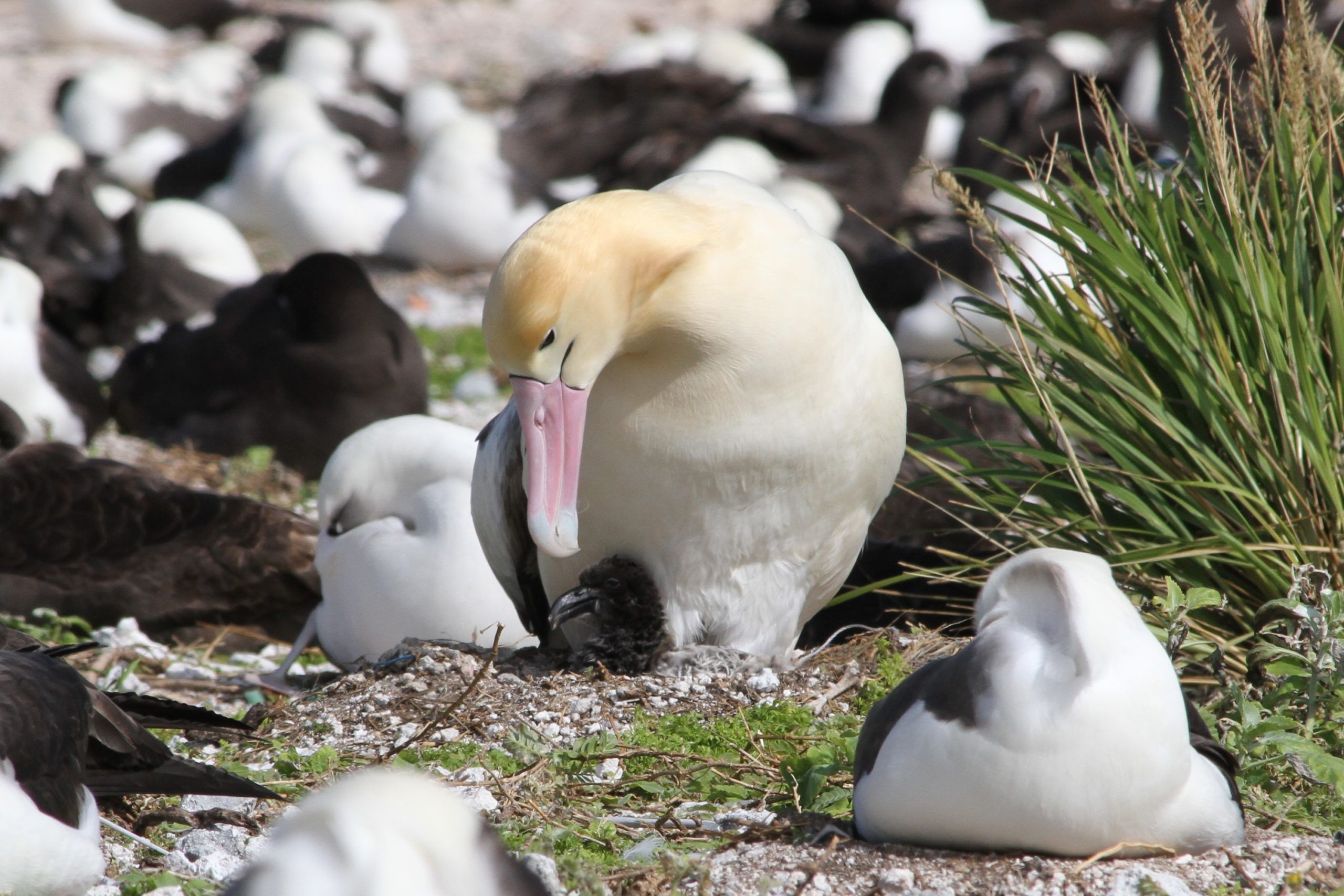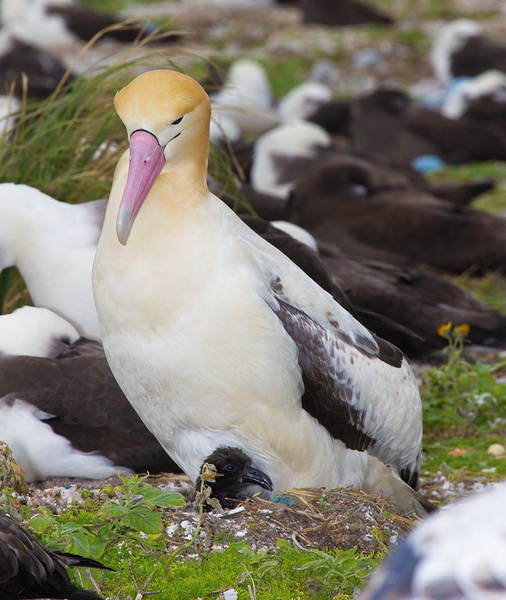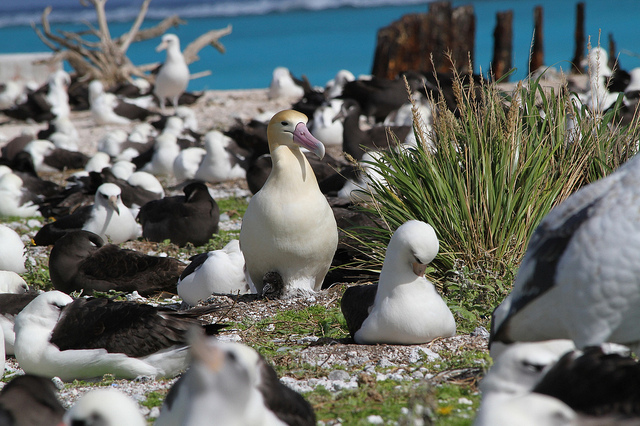Published in the Ocean Watch column, Honolulu Star-Advertiser © Susan Scott
January 24, 2011
The stormy weather we’ve been having has me worrying about an albatross chick that hatched at Midway Atoll this month. All the half-million or so baby birds there have my best wishes, but one tiny fluff ball gets a special aloha. Along with countless people worldwide, I’m rooting for the first short-tailed albatross hatched outside of Japan in recorded history.
 Photo Courtesy Pete Leary/USFWS
Photo Courtesy Pete Leary/USFWS
Short-tailed is this grand seabird’s official name, but its former nickname, golden gooney, paints a more colorful picture. The golden hues of this albatross’s head and neck feathers are so shimmery, and the bill is such a delicious pink with a baby blue tip, that the sight of the bird stops you in your tracks.
Literally. These critically endangered albatrosses are so few in number (about 3,000 worldwide) that if workers or visitors on Midway come across one of the one to three short-tails that have visited Midway during breeding season since about 1940, people halt and silently tiptoe backward.
Four years ago two of Midway’s short-tailed pioneers finally clicked, and last November (albatrosses don’t rush into these lifetime commitments) the couple began incubating their first egg on Midway’s 330-acre Eastern Island. The chick’s arrival on Jan. 14 has been big news in the world of seabirds.
Short-tails are one of the Northern Hemisphere’s three albatross species, historically nesting on islands around Japan. These birds are so large they make the other two look petite. Laysan albatrosses weigh from 5 to 7 pounds, with the bulkier black-footed albatrosses a pound or so more. Full-grown short-tailed albatrosses grow to a hefty 15 pounds.
 Photo Courtesy Dan Clark/USFWS
Photo Courtesy Dan Clark/USFWS
Most of us know the gloomy stories about albatrosses being killed by the millions for hats, pillows and feather beds. Once the most abundant albatross species in the North Pacific, the short-tail’s story is one of the saddest. Feather collectors killed 5 million nesting parents in the late 1800s, clubbing to death every last bird until the species was thought to be extinct.
Young short-tailed albatrosses, however, remain at sea for five or so years before returning to their home island to find a mate, and after the slaughtering stopped, a few showed up on the small remote Japanese island where they fledged. Worse luck. The island, Torishima, is an active volcano, and in 1939 an eruption destroyed all but 10 nesting pairs.
Since then the short-tailed albatross population has been slowly increasing on that island, and people are going to extraordinary measures there to help the birds. With another eruption predicted, Japanese and American workers have teamed up to move, and feed, 15 4- to 6-week-old chicks each year to a safe island 217 miles south. Studies show that albatrosses return not to where they hatched or fledged, but rather to where they grew up.
And now one is growing up on Midway. Seabird workers and fans around the world hope that this wildlife-protected atoll near the end of the Hawaiian Island chain, and part of the Papahanaumokuakea National Marine Monument, will one day be a significant breeding site for short-tailed albatrosses.
So far, so good. Midway biologists report that the new parents are doing a fine job of protecting their precious offspring from the elements.
To these golden beauties, aloha. Welcome to Hawaii.
 Photo Courtesy Pete Leary/USFWS
Photo Courtesy Pete Leary/USFWS